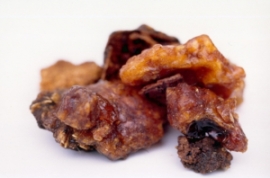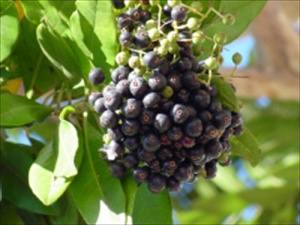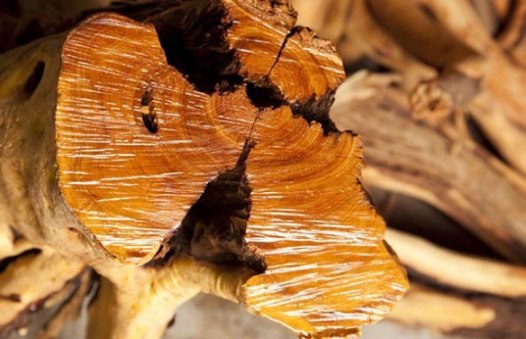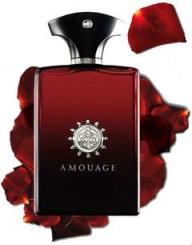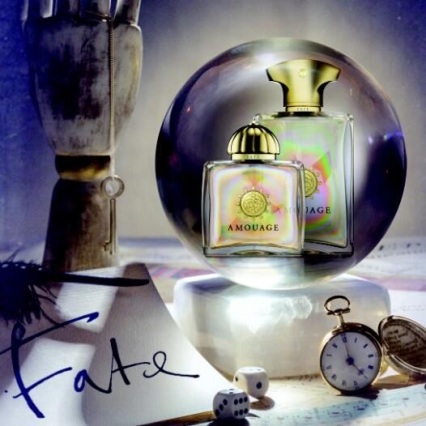Imagine a kaleidoscope where, every time you turn the knob, the plates shift and change. Sometimes, it’s just in the colours and their order: red, yellow, green and black, turning into yellow, green, black and red. Sometimes, the shapes themselves change, creating a whole new vision. And, sometimes, it’s both things, with the overlapping plates changing in both formation and colour.
That was my experience with Interlude for Men (hereinafter just “Interlude“) from the royal Omani perfume house of Amouage. It’s a triumph of technical mastery with notes put together like the bricks in an Egyptian pyramid, in a vision of intricate, olfactory complexity. Yet, Interlude is also an incredibly changing fragrance that will throw off different colours and shapes like a kaleidoscope. The broad strokes occasionally remain the same, but the details differ each time.
I tried Interlude twice with two different results, and am currently at the end of a third day, with still further variations in the nuances. Interlude is a perfume that I could test for 30 days in a row and I suspect that I’d have about 10 different, subtle variations, at the very least, during that time. That’s the sign of a spectacularly well-crafted, well-blended fragrance with more intricacies than a Swiss watch, a fragrance that will reveal different facets each time like a perfectly cut diamond. And some of those facets are simply stunning. In fact, I’m not sure what has left a greater impact on me: Interlude’s complex intricacy, or the intriguing, forceful, and often beautiful scent of some of its stages. Yet, for all that, I experienced some rough patches which make me a little uncertain that this brilliant creation is ultimately for me. All of that means that this is going to be a very long review, I’m afraid. Interlude is simply too complex a scent to avoid it.
Interlude Man is an eau de parfum that was created by Pierre Negrin and released in 2012. Fragrantica classifies it as a woody Oriental, and says that Interlude was intended “to evoke an air of disorder while maintaining a sense of balance and tranquility through the inventive use of incense and myrrh.” The Amouage website elaborates on that point a little:
Interlude for Man is a spicy and woody fragrance inspired by chaos and disorder masquerading an interlude moment of harmony in its heart.
Top Notes: Bergamot, Oregano, Pimento Berry Oil.
Heart Notes: Amber, Frankincense, Cistus [Labdanum], Opoponax.
Base Notes: Leather, Agarwood Smoke, Patchouli, Sandalwood.
For once, the PR and marketing descriptions are quite accurate. Interlude does have a rather chaotic, difficult, intense, and disordered opening which soon gives way to plush, comforting, gorgeously rich harmony. Part of it stems from the oregano on the list, and part of it has to do with the opoponax. Opoponax is another name for Sweet Myrrh, a resin which has a very honeyed, balsamic, sweet aroma. In that way, it differs from regular myrrh which can be more churchy, cold, soapy, or medicinal. Opoponax runs like an aorta through the heart of Interlude, combining first with the oregano, incense, and pimento in the opening, before later melting into the sandalwood and amber.
I tested Interlude in full twice, and, for the most part, the openings were largely the same in their broad strokes. There is always an initial blast of sweetness from the honeyed opoponax, mixed with incense smoke and green herbs atop subtle hints of leather and amber. That’s where the similarities end, however, because the notes, their order, their strength, and their feel varied quite a bit in each tests.
FIRST TEST:
In my first test, Interlude opened with honey, caramel, nutty amber, and sweet incense followed quickly by mentholated green notes, touches of camphor, leather, and chili pepper pimento. There is a huge blast of dried green herbs but — thanks to the strength of the pimento berries and the powerfully sweet, balsamic, honeyed opoponax — it feels almost as if the dried leaves have been transformed into something sticky, spicy, and caramelized. In fact, the honeyed nuances of the opoponax are so rich, it really does have the nutty feel of caramel. Underneath, there are subtle leather tones, and an intense, dirty, slightly goaty labdanum.
The overall bouquet is of a very medicinal, dried, green, herbal concoction covered with honeyed caramel, sweet resins, sweet smoke, and dark, warmed, animalic, slightly dirty leather. There is a somewhat dusty feel to the combination, too. The fragrance strongly evokes one of the old, dusty, Asian, herbal, homeopathic medicine shops that I visited in China, mixed perhaps with the dusty parts of an ancient Moroccan souk. The aroma is exactly what I thought Serge Lutens‘ Ambre Sultan would be like with its reportedly strong, medicinal, herbal opening. That wasn’t my experience with Ambre Sultan, but it is very much how Interlude starts for me in my first test. Medicinal, herbal amber with sweetness, incense, and a hint of ancient dustiness. The golden amber is stunningly beautiful, though extremely sweet, and it creates a visual kaleidoscope whose shifting colours center on gold, dappled with specks of dark green and fiery, peppery red.
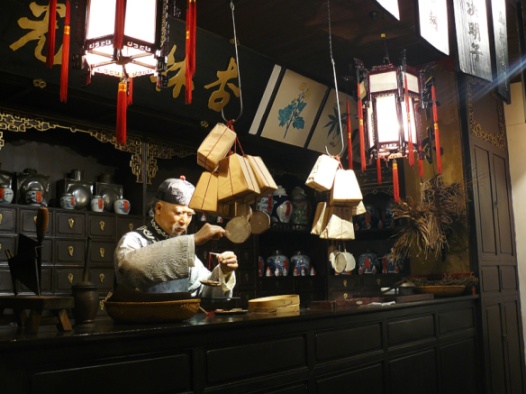
Model of an old, 19th-century, Shanghai medicine shop. Source: arekusu.de http://www.arekusu.de/?p=292
As time passes, the herbal pungency of the oregano feels less dry and medicinal. The camphorated notes vanished within minutes, but even the pungency has been tamed by the honeyed caramel richness. The subtle flickers of ancient dust are similarly overtaken, only now it’s by the warm, slightly animalic musk seeping out of the labdanum. Throughout it all, however, is the gorgeous incense whose smokiness infuses all the other elements and ties them together like glue. It’s sweet from the opoponax, but it’s also dark like frankincense. Fifteen minutes into Interlude’s development, the oud smoke joins the festivities. It never feels like pure, actual oud, but, rather, more like the dry, woody aroma that would ensue if agarwood were burnt. It’s very subtle at first, and limited to a mere flickering, woody shadow in the background, but it’s very pretty. Together, the oud smoke and incense help cut through some of the opoponax’s caramel richness, ensuring that Interlude is perfectly balanced and never so sweet that it verges on the cloying.
In that first test, I applied 4 really big sprays of Interlude but, to my surprise, the sillage wasn’t monstrous. It created the perfect small cloud around me, as golden as a halo. The richness of the caramel-honey was so intense, it feels as though one were swimming in liquid gold flecked with herbs. Again, I’m reminded of how this is what I thought Ambre Sultan would be like, except the latter was sheer, thin and mild on my skin instead. Another perfume comes to mind as well. The way Interlude softens to a dreamy, billowing, intensely rich, golden cloud makes me think of Xerjoff‘s Mamluk. It has some of the same rich sweetness as Interlude, though Mamluk is primarily a gourmand caramel-honey-lemon bouquet, and not a dry caramel-honey-oregano-smoke one. Still, the degree of both perfumes’ opulence and that honeyed caramel accord makes them feel like distant cousins in the same wealthy clan.
Forty-five minutes in, Interlude starts to shift a little. The leather, dust, and medicinal undertones have largely faded to a muted whisper. Only the sweet musk and the subtle fieriness of the pimento spice remain as supporting players on Interlude’s stage. They stand quietly on the sidelines, watching as, under the spotlights, like a giant Valkyrie out of Wagner’s Ring opus, the darkly green, dried, herbal, smoky, caramel amber sings her heart out. She ends her song around the 90-minute mark, at which time Interlude changes course fully and drastically. The perfume has suddenly become extremely dry and woody. It’s as though the oud smoke and woody notes have pushed the singing, caramel-opoponax Valkyrie off center stage, and taken its place next to the dried, green, herbal and spice mix.
Something new has also appeared. There is an unexpected fruitness swirling around Interlude, as if the red pepper pimentos were truly in berry form. Actually, the note feels distinctly like raspberries! It’s quite perplexing. It probably means the patchouli is at play and of the slightly fruited variety; when mixed with the pimento berries, the patchouli must have sweetened them to a fruited, almost syrupy degree. On occasion, the raspberry note balances Interlude’s new smoky aridness and woody flavour, but generally, it feels discordant and out-of-place. It doesn’t help that the musty dust specks have returned, adding yet another strange layer to Interlude’s background notes.
I’m not crazy about the overall combination, truth be told. And I become distinctly less enthused around the 3.75 hour mark when Interlude’s strange raspberry note takes on a somewhat powdered and vanillic feel. A sheer veil of oud lurks right behind it.The herbal notes are now distant figures in the horizon, something for which I’m quite thankful as it would simply be too odd of a combination. The honeyed caramel has similarly retreated. Now, Interlude is primarily a dry, woody, raspberry fragrance. It’s light in weight, gauzy and soft in feel, and hovers just an inch or so above the skin.
Interlude continues to change. By the middle of the fourth hour, the fragrance is primarily a powdered raspberry wood fragrance with oud and incense atop an abstract, vague sweetness. A new element starts to stir in the base: sandalwood. It doesn’t feel like Mysore sandalwood, but it’s extremely pretty with creamy richness that is delicately sweetened and warmed. It blooms with every passing minute until, at the start of the sixth hour, it really dominates the scent, turning Interlude into the harmonious, beautiful, comforting luxury that the PR ad copy talked about. The raspberries are still there to a small extent, but the sandalwood is at the heart of the drydown. It’s infinitely creamy, sweet, rich, and thick, with an almost nutty undertone. The latter may stem, in part, from the labdanum amber with its rich, sweet, honeyed nuances. The two new stars — the amber and the sandalwood — are both infused with oud smoke, creating a layered triptych of creamy woods, smoke, and sweetened amber.
Interludes remains that way, in this first test, largely until its final moments. The oud smoke fluctuates in strength, sometimes seeming as though it’s about to take over, sometimes sharing the stage with the sandalwood and amber. The raspberry, alas, remains in place. At its very end, Interlude turns into an abstract, woody dryness mixed with a hint of fruity powder. All in all, with 4 large sprays, Interlude lasted a whopping, astronomical 14.75 hours on my voracious, perfume-consuming skin. The sillage was good, though it was less powerful in projection than what I had expected. Still, Interlude was a small, soft, billowing cloud around me for about 3 hours, then shrinking in size to hover just an inch above the skin for another few hours. It became a true skin scent around the end of the seventh hour. Excellent times, all in all, but I did apply a substantial amount.
SECOND AND THIRD TESTS:
Given the amount that I initially applied, and the characteristic complexity of Amouage’s fragrances, I decided to test Interlude a second time. This time I used half the amount, about 2 good sprays, and I was surprised to have a very different outcome. Now, Interlude was primarily a fruited, but dry, woody scent with a lot of incense smoke.
In my second test, Interlude opened with honeyed herbs that had a harshly medicinal, camphorated edge mixed in with leather. The latter feels raw, uncured, rough, harsh, and very dirty. The oregano smells concentrated, and somewhat off-putting. It’s simultaneously like the dried variety, like a massive bunch of the fresh kind, and a third sort where both forms of oregano have been burnt to an acrid, smoky edge. Interlude evokes more than ever an old Chinese spice, herbalist medicine shop that is lightly covered by the dust of ages. This time, however, some of those herbs have been set on fire and mixed with sharp frankincense smoke. A sweet but animalic muskiness adds to the pugnacious mix which is joined, within a matter of mere minutes, by the raspberry note. It feels like both the concentrated, dried fruit, and the candied variety infused with sugar, but never like fresh raspberries. The honeyed myrrh is very subtle this time around, taking a back seat to the other notes, and adding just a hint of sweet caramel. Fifteen minutes in, the oud appears as well, feeling a little like agarwood as well as its smoke.
I’ll spare you the hour-by-hour fluctuations, but the bottom line this time around is that Interlude has an extremely different focus for its first 7 hours. The primary bouquet is of fruited, raspberry woods covered by a thick veil of sharp, black frankincense smoke with oud and some peppered spicy notes. The powerful oregano accord with its varied nuances remains for a good portion of the first two hours, until it eventually fades away. I don’t mind it, but I can’t stand it in conjunction with that fruited, raspberry note. Actually, to be precise, I can’t stand the raspberries. Not one bit, and especially not when they take on a vanillic, powdered characteristic.
Starting at the middle of the eighth hour, Interlude shifts into the gorgeous, glorious sandalwood stage that I loved so much the first time around. The infinitely creamy, slightly spiced woods are supplemented by cozy, comforting, rich amber, along with smoke and the merest hint of aged leather doused in a fine layer of caramel. It’s truly beautiful, and quite addictive to sniff. Flickers of dry oud smoke and, unfortunately, raspberries dance around the edges, but they are subtle. Nine and a half hours in, Interlude is all toasty, nutty, sweet, sandalwood with caramel and hints of smoke. By its very end, 12.5 hours from Interlude’s start with just 2 sprays, the perfume is nebulous, amorphous sweetness with a hint of some vague, lightly powdered fruitness mixed in.
I’m actually writing this review towards the end of my third test of the fragrance in as many days, and there is a third version of Interlude that has emerged. As you can tell, the layers in Interlude show themselves very differently upon each wearing. The overall brush strokes this time around are not wholly the same, though the fragrance begins with the same herbal notes as in all the other tests. The nature of the oregano falls somewhere between the opening of the first two times, but, unfortunately for me, the raspberry is as heavy from the start as it was during the second test.
This third time, however, the frankincense has truly dominated everything else, even the oregano, and it is incredibly powerful. Its sharpness and strength call to mind one of the Chinese Buddhist temples that I saw in Beijing during a religious festival, where incense smoke billowed out from seemingly every nook and cranny. In the third test, the leather seems significantly more noticeable, too, right from the start, but the oud is much more insubstantial than it was the second time around. And, as a whole, this 3rd version of Interlude bears very little resemblance to the first version. At best, you could say it’s like a combination of Test 1 and Test 2 (particularly since the bloody raspberry is there again), except that comparison wouldn’t be wholly accurate given the intensity of the incense.
OVERALL:
In short, Interlude is a bit of a kaleidoscope where all the gears shift and change depending on wearing. Both the strength and the order of Interlude’s notes vary in the perfume’s first seven or eight hours, such that the primary focus seems different each time. On me, depending on test, Interlude was primarily a herbal-caramel amber scent, then a dry fruited-woody-oud one, and finally, an incense smoke one subtly backed by leather. All the remaining, additional elements or nuances varied each time in terms of strength and when they appeared. Yet, in each test, the final stage was always that gorgeous “harmony” period of sandalwood, amber and sweetness. And it’s truly beautiful.
A few other things about Interlude. I personally think this is a fragrance that smells better from afar sometimes than sniffed up close, at least during the first stage. Some people loved the overall scent that was wafting from me one night from a distance but, when I gave them my arm to sniff Interlude up close, they wrinkled their nose. I suspect it’s the pungency of the oregano, or perhaps it’s the combination of the oregano with the incense. Another thing to pay heed to is the strength of the fragrance. On Fragrantica, commentator after commentator talks about how Interlude is positively “nuclear” in its forcefulness, both in terms of sillage and longevity. On a few people, the fragrance can last up to 24 hours; one person said they could detect the aroma wafting just from the bottle alone on the other side of the room.
As a whole, Interlude Man seems to be one of men’s favorite Amouage scents and a cult hit. The majority of reviews on Basenotes and Fragrantica are overwhelmingly positive. On Basenotes, out of 23 reviews, 48% (or 11 commentators) give it the full 5 stars, with 9% giving it 4 stars. However, 26% give it 3, and 17% (or 4 people) give it 1 star. Interestingly, one of those raving 5-star reviews comes from a person who was wholly unimpressed by Interlude when he dabbed it on, but who fell head over heels for the fragrance when it was sprayed. It makes sense to me because I think this is a very complicated scent, and both the act of spraying and the quantity can impact Interlude’s character. The 4 Basenotes posters who hated the fragrance and rated it one star seemed to have sharply different reasons for doing so. For one, Interlude had too much of a “kitchen spice” accord, while another found it to be extremely cloying. A third found Interlude to be all amber mixed with a synthetic oud, and, thus, to be “seriously over-priced.” In contrast, the fourth found Interlude to be mainly sour fruit in aroma:
SOUR! Not a slight animalic or medicinal note but sour like ramming tamarind paste up my nostrils. This continued for hours without the slightest of evolution. Definitely not dry woods or incense or leather or even astringent bergamot. It was soggy wet rotten fruit for hours.
Over on Fragrantica, the reviews are even more positive in number than they are at Basenotes. The majority view is best summed up by the chap who described Interlude as a “fantastic, in-your-face spice/incense MONSTER that grabs you by the neck and throws your face into it’s scent full-throttle.” To my relief, one person detected the raspberry note, another thought it was strawberry, and a third picked up the Ambre Sultan resemblance, writing “Reminds me Ambre Sultan by Lutens, but with less spicy notes and more incense.” Perhaps my favorite assessment came from “kochy7058” who found Interlude to be an initially harsh scent that was redeemed by its drydown, but whose overall “testosterone” forcefulness made it suited only for bosses in upper management. To be specific, “Gordon Gecko,” Michael Douglas’ ruthless corporate raider from the movie Wall Street. It’s hilarious, but it really does fit. Interlude is like a battleship and a boss, steamrolling its way through most things with the arrogant confidence of supreme dominance.
However, I think the negative reviews of Interlude can be quite instructive on how that forcefulness, mixed with Interlude’s harsh opening, can make the fragrance go terribly wrong on some people. To wit:
- This reeks of an old, dusty attic with an odd “something smells sweet and sticky in the corner” odor. [¶] I have a sample of this and have to say that it’s absolutely horrid. [¶] This stuff is like napalm. It sticks to you and tortures you and no matter what you do, you can’t wash it off or scrape it off your body.
- I like it, but it cause dizziness seriously! maybe it is the insence.
- I’m not really liking this as the “kitchen spice accord” really overwhelms everthing else. And it smells like something that should be on a pizza or put into a curry. And its something I do not want to smell like.
- it is a different story when it is sprayed out of a bottle. It dried down to a very harsh, herbal mess mixed with body odor and I literally had to convince myself that it smelled “good.” [¶] The final straw was when I had a friend over to my place. He sniffed the air a couple times and gave a repulsed look. “Something smells like fucking ass.” I blamed it on my dog farting, and excused myself to the bathroom and scrubbed it off. I sold the bottle 3 days later.
Oh dear. “Napalm,” dusty attics, pizza toppings, and herbal body aroma. Clearly, how Interlude manifests itself on your skin will depend not only on chemistry, but also, on how your brain processes the chaotic, odd, harsh, sometimes discordant opening. The oregano, in particular, seems to be an insurmountable obstacle for some. My own varied experiences with the fragrance should underscore the obvious fact that Interlude is a fragrance that you need to test a number of times. Quantity, method of application (i.e., spraying versus dabbing), and the perfume’s innate complexity mean you can have slightly different results each time.
For me, personally, Interlude is a lovely scent, but I’m not driven wild with madness for two reasons. First, I hated that damn raspberry note. Second, I don’t trust which version I will get from one day to the next. I didn’t mind the oregano opening, and I enjoyed it when combined with the opoponax’s honeyed caramel, especially once the more bitter, medicinal nuances faded away about twenty minutes in. The second time around, it was very different, and wasn’t so appealing. Plus, the raspberry — especially when powdered and vanillic — was far from my personal cup of tea. I wasn’t too crazy about the rawness of the leather in the opening moments of one test, either. At all times, however, I absolutely adored the sandalwood stage at the end.
Despite the difficult bits, whenever I would catch wafts of Interlude in the air a few hours in, I always thought it to be truly lovely. There was something mysterious about its intriguingly different complexities when smelt from afar, and something smolderingly intoxicating about the overall bouquet. I would absolutely wear Interlude if a bottle accidentally fell into my lap, though I would probably make sure that I sprayed on enough to get the honeyed caramel/Ambre Sultan version, and I would try not to smell it up close until at least a few hours had passed. It is a scent that I think is really spectacular on a technical level, but I’m not sure I like — or trust — Interlude enough to ever contemplate spending so much money buying it.
At the end of the day, perhaps the best way to describe Interlude is, indeed, that original Amouage PR copy about chaos and disorder as a prelude to beautiful harmony. The issue for you will be how well you manage with that first stage….



